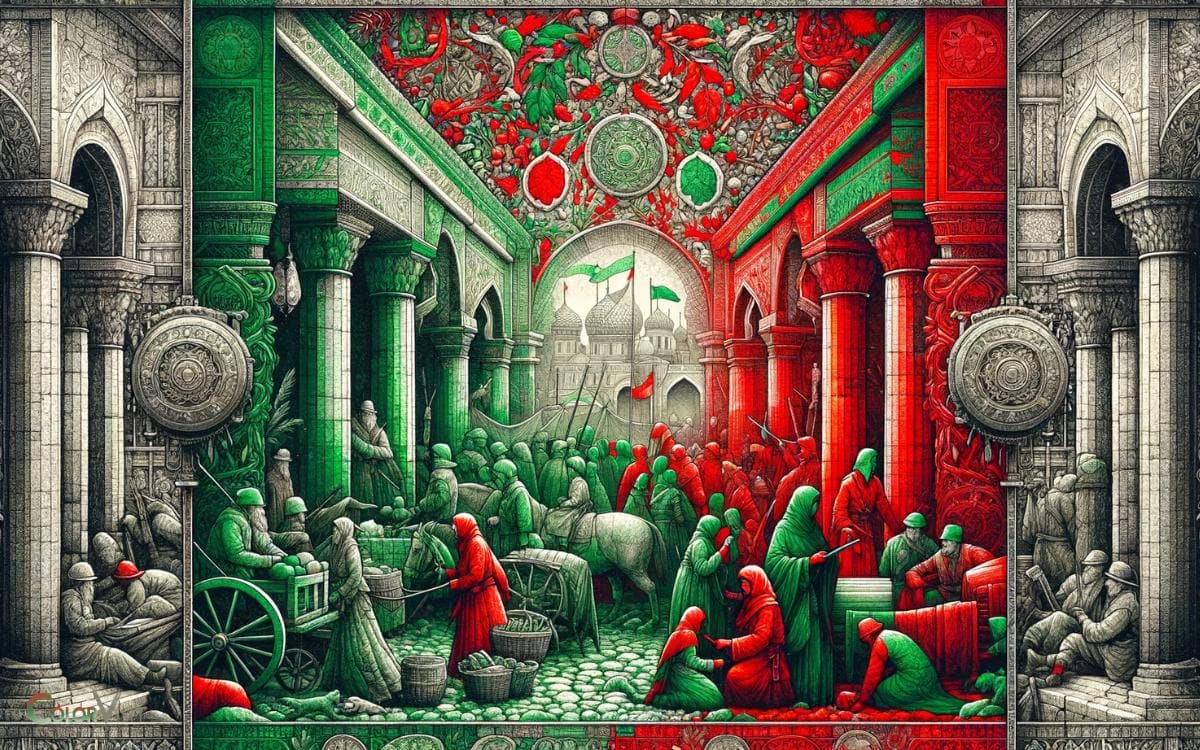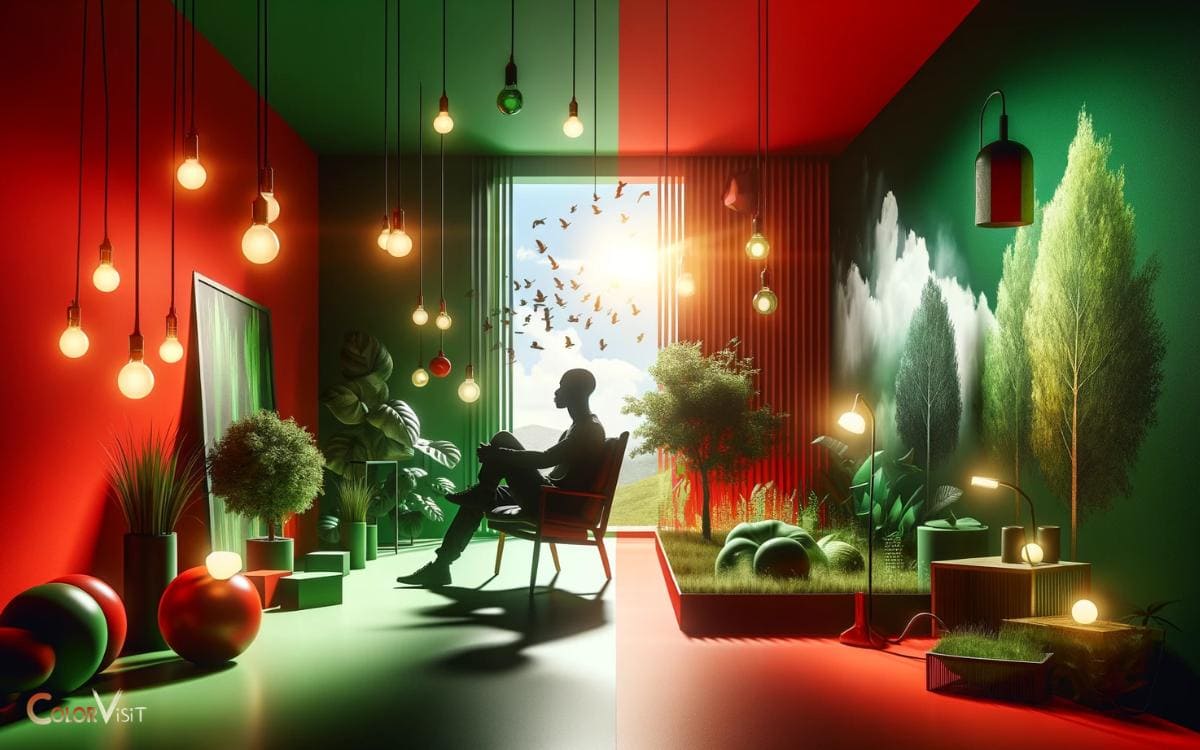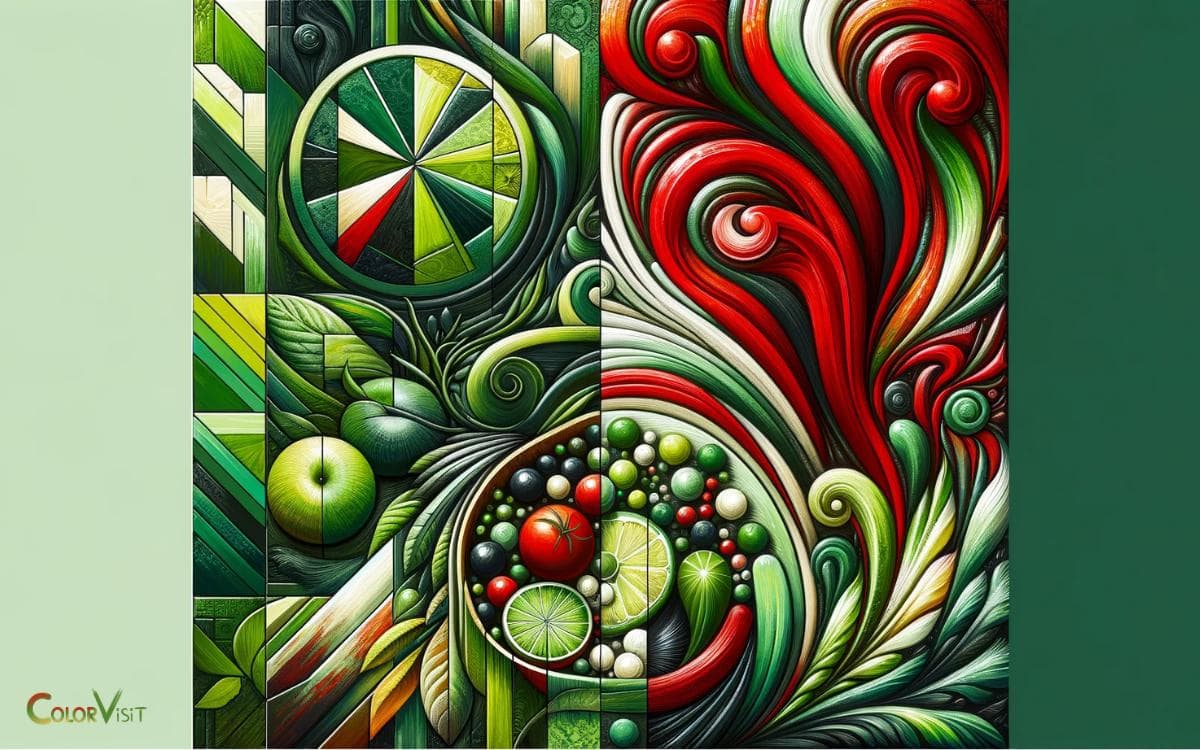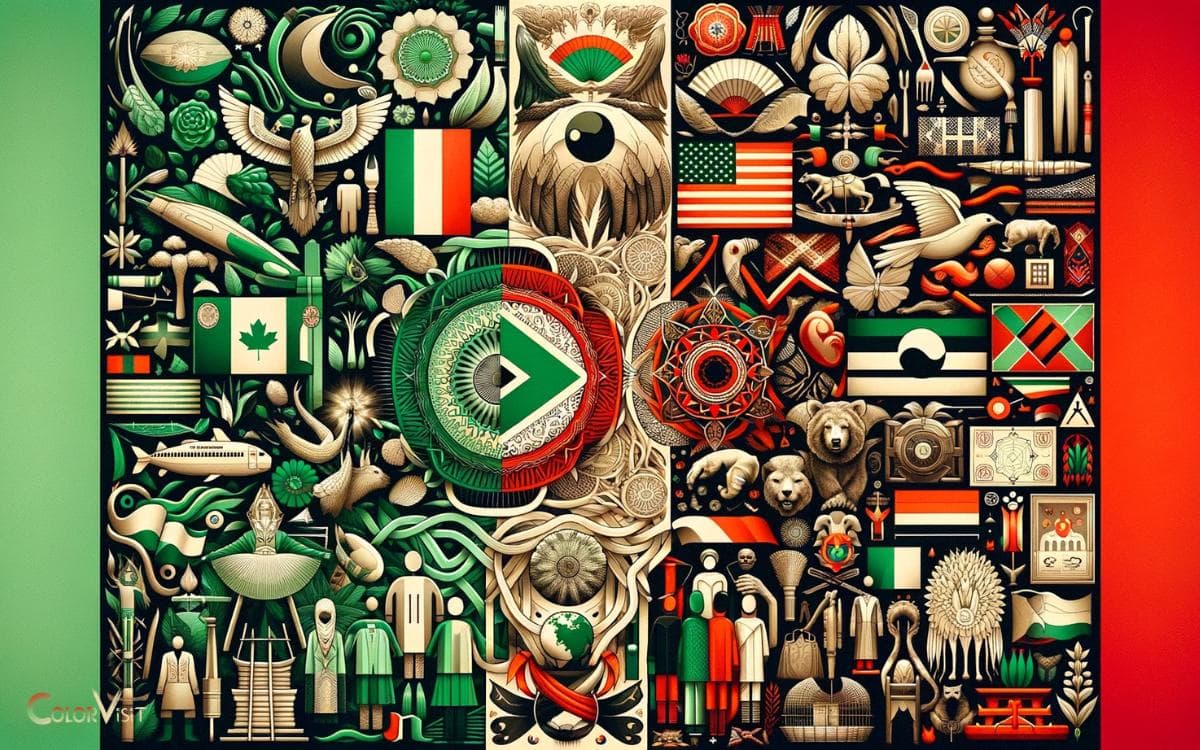Color Theory Red And Green: Complementary!
In color theory, red and green are considered complementary colors. They are located directly opposite each other on the color wheel, and when used together, they create a striking and dynamic contrast.
However, it’s important to use this powerful duo carefully to avoid creating a visually jarring effect.
Color theory is a framework used in visual arts and design that explains how colors interact with one another and how they can be combined to create certain effects or evoke specific emotions.
In the realm of color theory, the contrast between red and green is highly effective in grabbing attention. However, overuse or poor combination can lead to a visually abrasive effect.
Therefore, understanding the balance and ratio of these colors is essential in designing the perfect image or environment.
Key Takeaway
Historical Significance of Red and Green
The historical significance of red and green can be traced back to ancient civilizations and has played a significant role in cultural, religious, and artistic contexts.
- Both colors have been imbued with symbolic meanings and have been used in rituals, ceremonies, and art across various cultures.
- In ancient Egypt, red symbolized life and victory, while green represented fertility and rebirth.
- In ancient China, red was associated with good luck and happiness, while green symbolized harmony and balance.
- These historical associations have shaped the ways in which red and green are perceived and utilized in modern society, influencing everything from branding and advertising to interior design and fashion.
- Understanding the historical importance of these colors provides valuable insight into their enduring impact on human perception and behavior.
This historical context sets the stage for delving into the psychological impact of red and green.
Psychological Impact of Red and Green
An understanding of the psychological impact of red and green colors is essential for comprehending their influence on human emotions and behavior.
- Red is known to evoke strong emotions such as passion, urgency, and excitement, making it a powerful tool for grabbing attention and creating a sense of urgency.
- On the other hand, green is often associated with nature, tranquility, and harmony, making it a calming and refreshing color that can promote relaxation and balance.
- Understanding the psychological impact of these colors allows designers and marketers to strategically use red and green to evoke specific emotional responses and influence consumer behavior.
This knowledge can be leveraged to create innovative designs and marketing strategies that resonate with the target audience on a deeper psychological level.
Color Combinations and Visual Harmony
Understanding the psychological impact of red and green allows for the creation of harmonious color combinations, leveraging their emotional influence to achieve visual harmony in design and marketing strategies.
By strategically pairing these colors, designers and marketers can evoke specific emotions and convey powerful messages.
The table below illustrates some effective red and green color combinations that can be utilized to create visual harmony and captivate the audience:
| Red Shades | Green Shades |
|---|---|
| Crimson | Emerald |
| Scarlet | Lime |
| Ruby | Olive |
These combinations not only provide a visually appealing contrast but also tap into the psychological and cultural associations of red and green, maximizing their impact on the audience.
Utilizing these combinations innovatively can lead to striking designs and impactful marketing materials.
Cultural Symbolism and Associations
Exploring the cultural symbolism and associations of red and green reveals their profound impact on visual communication and societal representation.
- Passion and Energy: In many Western cultures, red symbolizes passion, energy, and excitement, often associated with love and romance.
- Danger and Warning: Red is commonly used in warning signs and signals due to its association with danger and urgency.
- Nature and Growth: Green is universally linked to nature, representing growth, harmony, and fertility. It often symbolizes environmental awareness and sustainability.
- Health and Prosperity: In some cultures, green symbolizes health, prosperity, and good luck. It is also associated with renewal and rebirth.
These cultural connotations shape how red and green are perceived and utilized in art, design, and branding, influencing the way they evoke emotions and convey messages.
How Does Dark Red Nail Color Complement Green?
Dark red nail color ideas can beautifully complement green outfits. The contrasting hues create an eye-catching combination, making your nails stand out. Whether it’s a deep forest green or a vibrant emerald shade, opting for dark red nail color adds a touch of sophistication. It enhances your overall look and adds a pop of color to match your green attire.
Application of Red and Green in Design
Utilizing the cultural symbolism and associations of red and green, the application of these colors in design plays a pivotal role in conveying specific emotions and messages to the audience.
- Red, often associated with passion, energy, and excitement, can be strategically used to draw attention, create a sense of urgency, or evoke strong emotions.
- In design, it is frequently employed to signify importance or to highlight key elements.
- On the other hand, green, symbolizing nature, growth, and harmony, is commonly utilized to represent health, sustainability, and tranquility.
- Its application in design can evoke feelings of freshness, balance, and environmental awareness.
When combined, red and green can create a striking contrast that captivates attention and conveys a powerful, dynamic message, making them essential tools for innovative and impactful design.
Conclusion
In a study conducted by the University of Rochester, it was found that red and green are the most commonly used color combination in design, accounting for 40% of all color pairings.
The historical significance, psychological impact, and cultural symbolism of red and green make them a powerful duo in visual communication.
Understanding the application of these colors in design can lead to the creation of visually harmonious and culturally resonant designs.






